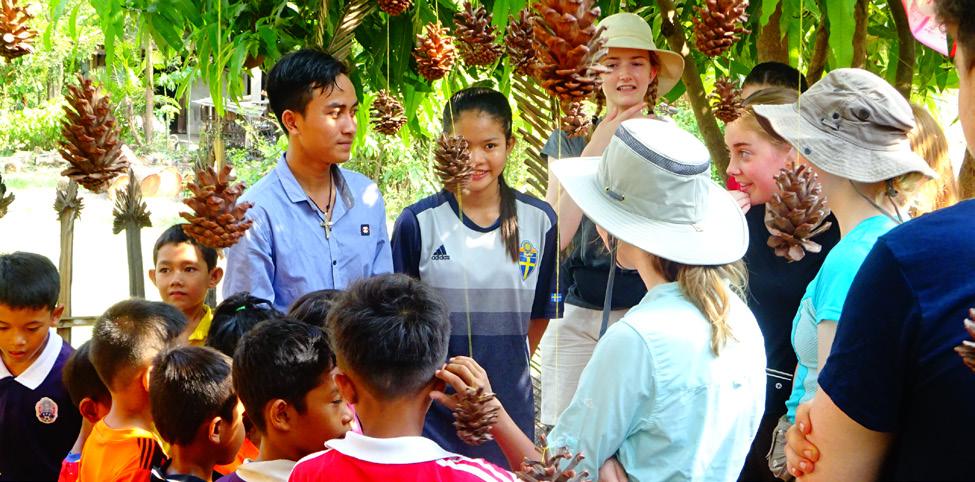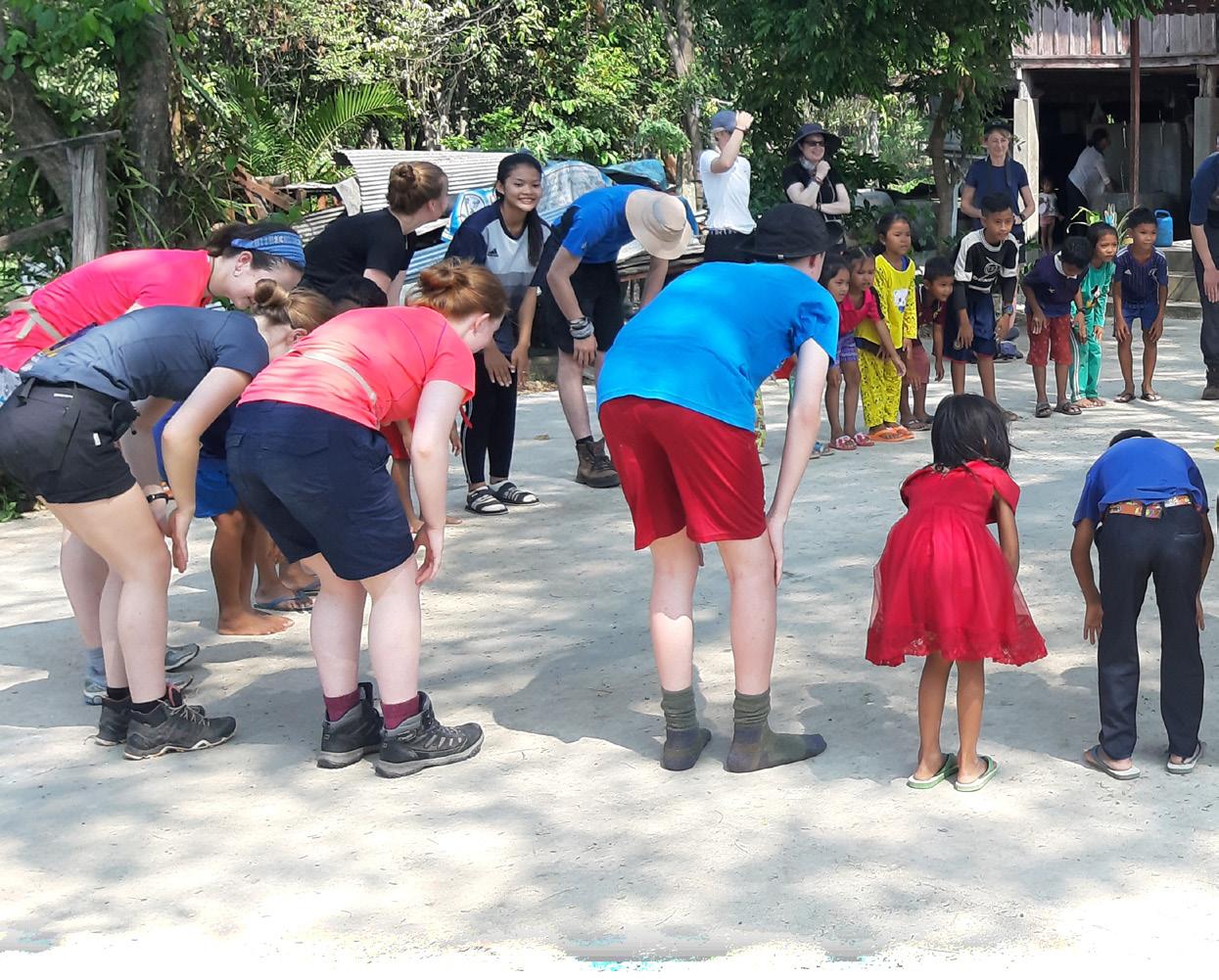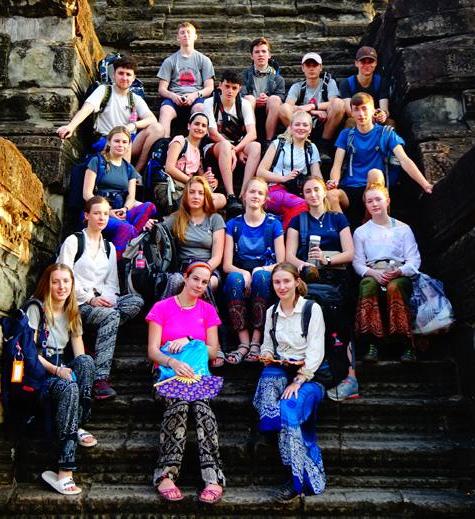
5 minute read
Cambodia
Travel is an enriching experience that can teach valuable life lessons, while also helping you to discover and understand more about the world and yourself. In order to understand the Cambodia of today, one needs to recognise its difficult history, and this was no more evident than on our first day when we visited Phnom Penh’s S21 Prison and Killing Fields, bringing us face to face with the country’s bitter past.
From 1975 to 1979 a communist leader, Pol Pot, lead a brutal regime called the Khmer Rouge, killing millions of innocent Cambodian people. Killing Fields spread across the country of Cambodia, the largest of them being Choeung Ek, which sits on the outskirts of Phnom Penh and today serves as a monument to all those who died, and to those who survived.
Choeung Ek was not the easiest place to visit, but it was an opportunity to learn for ourselves on the exact grounds that all of the horrible actions took place.


At the start of our second day we left our hostel and transferred by bus to the riverside community of Andoung Teuk, where we boarded the Chi Phat Community boat and journeyed upstream along the Preak Piphot River. We felt the remoteness of our location, having travelled a further hour down river to the start of our trek. We alighted at a small clearing in the mangroves and proceeded on foot into the jungle. Moods lifted as we began our trek in the heart of the Cardamom Mountains. For three days we walked along old logging trails, camping each night at established campsites in the jungle, and sleeping in hammocks. In Chi Pat, at the beginning and end of the trek, we had a night in a homestay, giving us a great taste of traditional Cambodian culture in this part of the country.

As South East Asia’s largest remaining rainforest, the Cardamom Mountains are full of rare and exotic flora and fauna, as well as an assortment of snakes and spiders. Once in camp we had the chance to swim in mountain pools, close to the O’Malu waterfall, and immerse ourselves in a real wilderness experience. Our local guides prepared some incredible food for us in camp, and lead us safely through our jungle trek. The three days were the highlight for many in our group, and lifted spirits after a difficult start in Cambodia.
We took the bus back to Phnom Penh for two nights, before travelling onwards to Battambang to meet with our project hosts, Better Lives, a charity that help disadvantaged families

and children. We spent a morning at a local children’s centre before starting the main project, building six vegetable gardens. Working alongside the Better Lives team and local villagers our pupils created the vegetable gardens, to generate enough healthy vegetables for the families to eat and sell for income. The benefits were mutual for the families, and for our pupils who learned a variety of skills and a level of understanding about the local community and their needs.
We stayed in a family run hostel in Battambang, which was a great base for exploring the local area. Our stay coincided with the Khmer New Year, and we had the chance to join the celebrations. New Year is also known as the ‘Water Festival’ by Westerners because local people splash and pour water on one another as part of the cleansing ritual to welcome the New Year. As New Year falls during the hottest month in South East Asia, many people end up dousing strangers and passersby in vehicles in lively celebration. We certainly enjoyed more than a few tuc-tuc rides getting soaked by the locals, and a visit to a local town to join thousands of others knee high in foam and being doused with fire hoses.
The final stage of our venture in Cambodia took us to Siem Reap and the ancient ruins of the Khmer empire. After catching the glorious sunrise at the Angkor Wat complex, a Unesco World Heritage site, we spent the day exploring just a few of the hundreds of temples on the site. Angkor Wat is the most famed of all Cambodia’s temples, built as a spiritual home in the 12th century



for the Hindu god Vishnu. The film Tomb Raider flung Cambodia into the international limelight, with the tree-riddled temple of Ta Prohm forming the backdrop for many scenes. Both temples were stunning, both in their grand scale and incredible detail. Our two nights in Siem Reap gave us time to explore the markets and enjoy good food, before travelling back to Phnom Penh for a final night in Cambodia and our flight home.

Our trip to Cambodia will be remembered for the unforgettable views, the people and the adventures we shared together. The life-changing experience was in no small part a result of the commitment, can-do spirit and mutual support within the St Peter’s team.
Cambodia Team: Marion Akhurst, Polly Brown, Valentina Cross, Ewan Findlay, Megan Ford, Leah Gath, Toby Greenwood, Will Guyer, Anna Harrison, India Harrison, Rachel Hartley, Ben Hobbs, Ava Horner, Joe Johnson, Stephen Johnson, Flora McDonald-Wilson, Abi Shaw, Ed Westmoreland, Lauren Crawley, Joy Warner, Jon Whitehouse, Vanessa Johnson.












